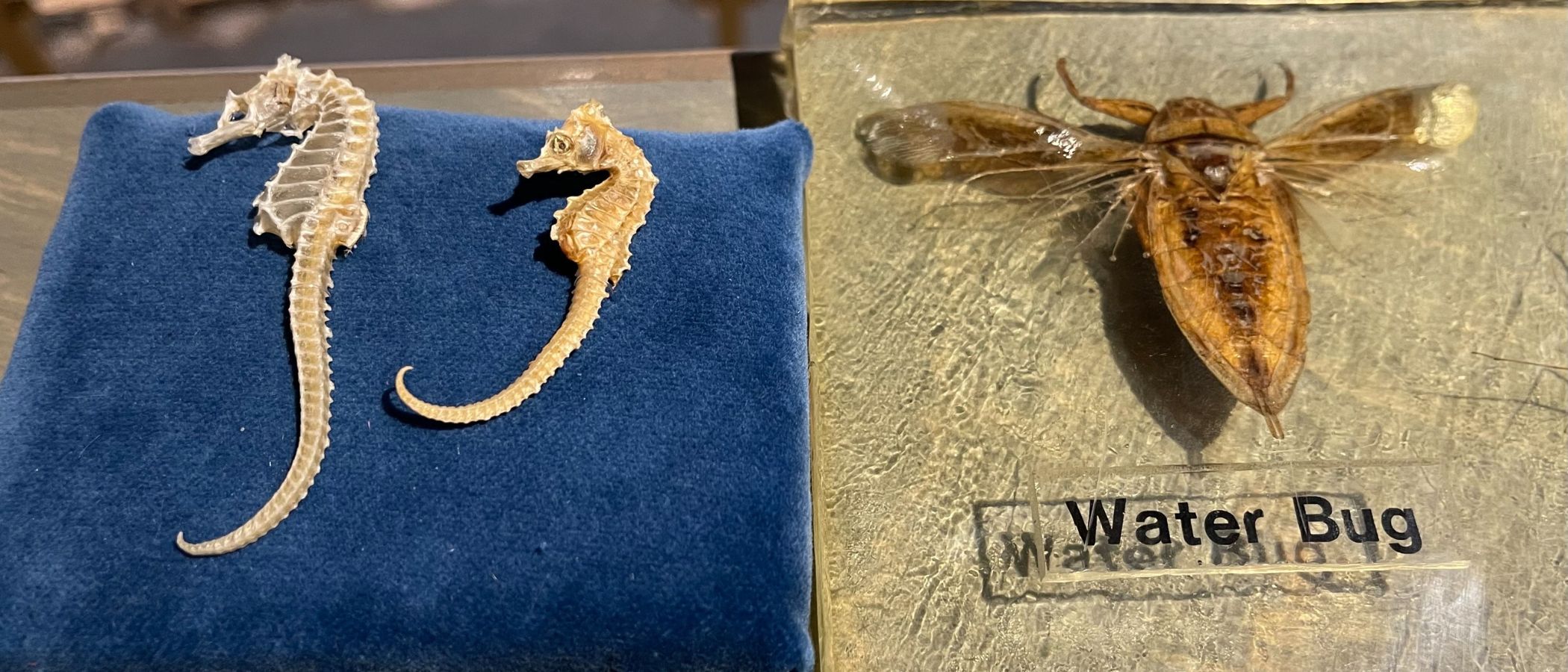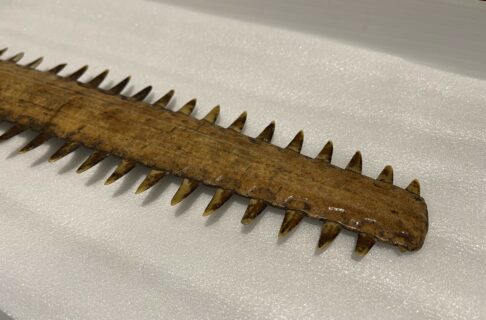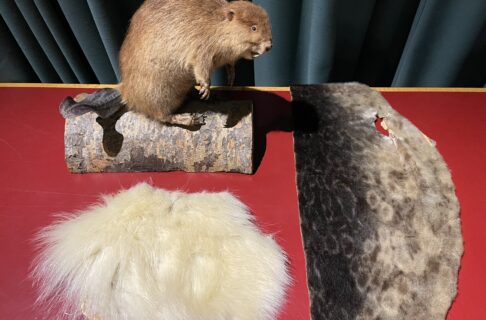For the month leading up to Earth Day, the Manitoba Museum is celebrating water and aquatic life. In the Learning and Engagement department, Erin Buelow has worked with curators and collections specialists to bring seldom-seen specimens to the public. These preserved animals from the museum’s natural history collection come from Manitoba and beyond, including an Australian duck-billed platypus.
The diversity of aquatic life is astounding, but it can be just as interesting to notice the adaptations that animals living in water share in common.
In a few species of aquatic animals, single fathers care for their young. The giant water bug, who you can find in Manitoba, shares this trait with the seahorse. After mating, a female giant water bug lays up to 150 eggs on the back of the male! He will tend to them for a couple weeks until they hatch. These underwater dads stay close to the water’s surface to make sure their young get enough oxygen. Similarly, the male seahorse carries fertilised eggs in a special brood pouch on the front of his body.
For semi-aquatic mammals like the beaver, ringed seal, polar bear, and platypus, fur can be nearly waterproof! When submerged, their outer layer of fur, the guard hairs, form a shield to keep the animal dry and reasonably warm. Beavers spend hours a day grooming to stay waterproof, using an oily liquid that they naturally secrete from a gland near their tail.
Two aquatic animals known for their bizarre appearance are the duck-billed platypus and the sawfish, each notable for a distinctive looking snout. The long rostrum on a sawfish has what appear to be jagged teeth along its sides. These “teeth” are actually modified scales that they use to attack prey and dig through the sediment. These animals have something else in common: special sensors in their bills to detect tiny electrical currents coming from their prey! This is especially important for the platypus, whose eyes and ears pinch shut underwater.
You can learn about these amazing aquatic creatures and many more at the Manitoba Museum this April! Every Saturday and Sunday, from 1 pm to 4 pm, leading up to Earth Days @ the Manitoba Museum, you can see and touch a diverse array of shells, bones, furs, and fossils as you discover the amazing adaptations that help these animals live and thrive in lakes, ponds, rivers, and oceans throughout the world.






